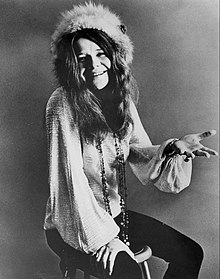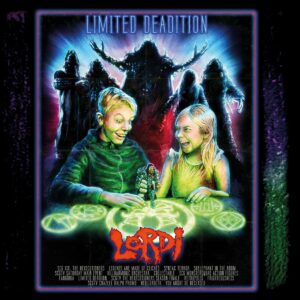Janis Joplin died on October 4 in 1970…
Janis Joplin would have turned 70 in January. The musician released four albums while she was alive – one for every year of her short career. A vocalist credited with mastering genres from rock to folk, Joplin was a pioneer for female artists and would go on to be a key influence on later movements in pop and rock music, despite dying tragically young at 27.
Joplin grew up in middle-American Texas, a world away from her later hedonism in San Fransisco. Her Port Arthur hometown was a place of high school bullying and social exclusion. In a television interview she conducted shortly before her death on 4 October 1970, Joplin said of her contemporaries: “They laughed me out of class, out of town, out of the state”.
However, being ostracised led her to seek out the music of blues artists Bessie Smith (below) and Ma Rainey, who Joplin would later say helped inspire her to become a singer. Joplin returned to Austin in the mid-60s, trying to be a solo artist, and spent a disinterested year at university where she appeared in student press as an amateur, hippyish, musician.
But it was in San Francisco, California, that Joplin would help build a scene that would change her life and contemporary music. Joplin moved to Haight-Ashbury, the neighbourhood which was to be a base for bands like Jefferson Airplane and Grateful Dead, in 1963. While the area became associated with psychedelic rock, Joplin recorded blues tracks with future Jefferson Airplane guitarist Jorma Kaukonen and fell into heavy amphetamine use, prompting a temporary return to Texas.
Joplin was brought back to California to play with psychedelic band Big Brother and the Holding Company. Their first gig together was in 1966 and a record deal followed. After a year permeated by industry mishaps, and during which Joplin became dependent on heroin, a self-titled debut album was eventually released in August 1967. This followed a breakthrough gig in front of tens of thousands of people at the Monterey Pop Festival, and saw Big Brother and Joplin thrust into the public eye. By 1968 the band were going by the clumsy name of Janis Joplin and Big Brother and the Holding Company – and Joplin had hit the headlines.
She may have been voted the “Ugliest Man on Campus” by a male fraternity while at college in 1963, but by 1968 Joplin was being declared “the most staggering leading woman in rock” by Vogue. “Janis Joplin can sing the chic off any listener”, the magazine cooed.
Chic, she was not. But her granny glasses, frizzy mane of hair, tattoos and jewellery – equalling that of a “Babylonian whore”, according to a 1960s Rolling Stone journalist – went hand-in-hand with her movement into a burgeoning new scene.
As the world’s press pursued her, she wrote home, quaintly: “All sorts of magazines are asking to do articles & pictures featuring me. I’m going to do everyone. Wow, I’m so lucky”.
Joplin, then aged 26, left Big Brother and the Holding Company to go solo in 1969. By this point, Cheap Thrills, the band’s second album, had reached number one on the US album chart, and stayed there on and off for two months. Meanwhile, the album’s lead single, Piece of My Heart, had hit number 12 on the singles chart. The song was a cover of soul singer Erma Franklin’s 1967 song, but became a bigger hit for Joplin, whose raw, soulful vocals gave it a new twist. Franklin later said she didn’t even recognise Joplin’s version.
Joplin’s first album with her new group as a solo artist, Kozmic Blues Band, failed to repeat the success of her work with Big Brother and the Holding company, but was critically acclaimed. The band’s European tour saw Joplin play London’s Royal Albert Hall, and a particularly riotous Frankfurt gig where the stage was invaded by fans. Despite the best efforts by her friends and fellow musicians, these were drug-addled days for Joplin. According to Peggy Caserta, Joplin’s friend and sometime lover, the musician was taking around $200 worth of heroin per day by 1969.
In late 1969, Joplin played the headline slot at Woodstock – she confessed to being “three sheets to the wind” during the performance – and the all-star Festival Express Canadian train tour followed. She took to the studio in September 1970 to record what would become the posthumous release, Pearl. Joplin’s final recordings were an A cappella version of wry blues track Mercedes Benz, and a birthday message for John Lennon.
Joplin was found dead in a hotel room on October 4, 1970, the day she was meant to record vocals for Pearl album track Buried Alive. She had overdosed on heroin, aged 27. Caserta and Joplin’s fiancee Seth Morgan had both planned to meet her that evening, but failed to turn up. Her death occured 16 days after Jimi Hendrix had died choking on his own vomit at the same age, continuing the myth of the macabre ‘27 Club’ which Jim Morrison, Kurt Cobain and Amy Winehouse would also become “members” of.
The tragic end to Joplin’s brief career, together with her contribution to music, have kept her firmly in the public imagination nearly 45 years after her death. Her vocals – from heartfelt purr to primal roar – expressed emotion, sexuality and politics in a way which defined the sentiment of her era. Even now, many still have a little piece of their heart taken by Joplin.
Source: The Telegraph



